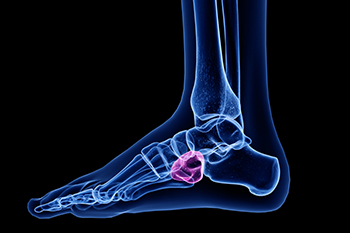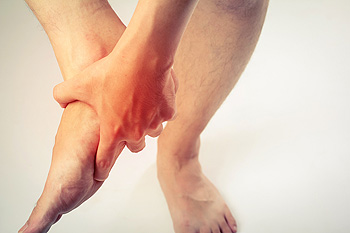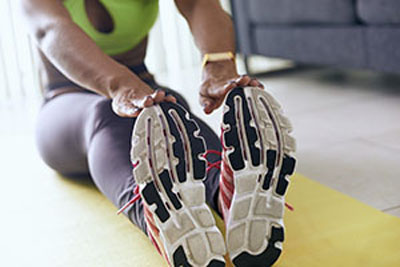 Cuboid syndrome is a foot condition that affects the cuboid bone, which is one of seven tarsal bones that are located in the middle of the foot. Additionally, it can be referred to as cuboid subluxation, and it may develop after a joint or ligament injury. Patients with cuboid syndrome can experience limping, swelling, and tenderness in the affected foot. While research has indicated that trauma to the foot is the most common cause of cuboid syndrome, some patients have overpronation or underpronation, which can lead to an increase in the risk of injury. This condition may also happen gradually, as the foot can endure stress a day at a time. Relief may come from resting the foot as often as possible, and it can help to wear proper shoes. If you have pain in your foot, it is suggested that you consult with a podiatrist who can perform proper testing for cuboid syndrome and offer correct treatment options.
Cuboid syndrome is a foot condition that affects the cuboid bone, which is one of seven tarsal bones that are located in the middle of the foot. Additionally, it can be referred to as cuboid subluxation, and it may develop after a joint or ligament injury. Patients with cuboid syndrome can experience limping, swelling, and tenderness in the affected foot. While research has indicated that trauma to the foot is the most common cause of cuboid syndrome, some patients have overpronation or underpronation, which can lead to an increase in the risk of injury. This condition may also happen gradually, as the foot can endure stress a day at a time. Relief may come from resting the foot as often as possible, and it can help to wear proper shoes. If you have pain in your foot, it is suggested that you consult with a podiatrist who can perform proper testing for cuboid syndrome and offer correct treatment options.
Cuboid syndrome, also known as cuboid subluxation, occurs when the joints and ligaments near the cuboid bone in the foot become torn. If you have cuboid syndrome, consult with one of our podiatrists from Foot Health Center of Merrimack Valley. Our doctors will assess your condition and provide you with quality foot and ankle treatment.
Cuboid syndrome is a common cause of lateral foot pain, which is pain on the outside of the foot. The condition may happen suddenly due to an ankle sprain, or it may develop slowly overtime from repetitive tension through the bone and surrounding structures.
Causes
The most common causes of cuboid syndrome include:
- Injury – The most common cause of this ailment is an ankle sprain.
- Repetitive Strain – Tension placed through the peroneus longus muscle from repetitive activities such as jumping and running may cause excessive traction on the bone causing it to sublux.
- Altered Foot Biomechanics – Most people suffering from cuboid subluxation have flat feet.
Symptoms
A common symptom of cuboid syndrome is pain along the outside of the foot which can be felt in the ankle and toes. This pain may create walking difficulties and may cause those with the condition to walk with a limp.
Diagnosis
Diagnosis of cuboid syndrome is often difficult, and it is often misdiagnosed. X-rays, MRIs and CT scans often fail to properly show the cuboid subluxation. Although there isn’t a specific test used to diagnose cuboid syndrome, your podiatrist will usually check if pain is felt while pressing firmly on the cuboid bone of your foot.
Treatment
Just as the range of causes varies widely, so do treatments. Some more common treatments are ice therapy, rest, exercise, taping, and orthotics.
If you have any questions, please feel free to contact one of our offices located in North Andover, and Tewksbury, MA . We offer the newest diagnostic and treatment technologies for all your foot care needs.











